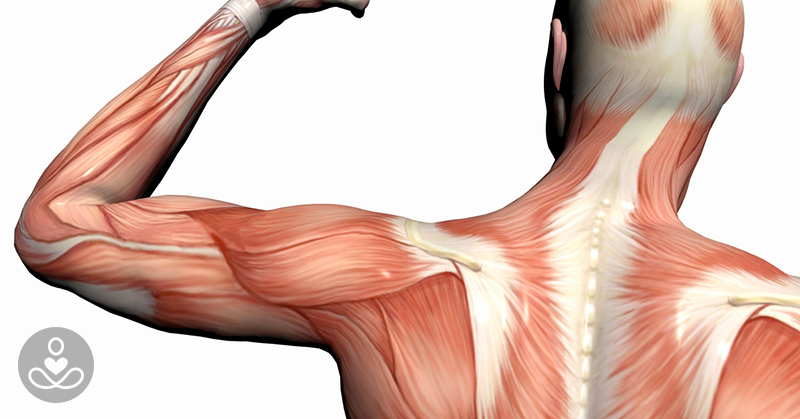Worried about your shoulder stiffness? If you think you have frozen shoulder read below to find out symptoms, causes and treatments in order to reduce pain and regain full range of motion.
What Is Frozen Shoulder?
Officially known as adhesive capsulitis, Frozen Shoulder occurs when your shoulder joint is stiff with pain to the point where it inhibits movement.
Symptoms develop slowly and usually in three stages, as follows:
- Freezing stage – The shoulder is stiff and any movement causes pain; the pain can be worse at night.
- Frozen stage – The pain may be more manageable but the shoulder is stiffer and thus further limits range of motion.
- Thawing stage – The shoulder stiffness starts to improve and movement begins to return.
As scar tissue builds in your shoulder, it becomes stiffer and harder to move. While it is not entirely clear what causes Frozen Shoulder, there are some possible triggers. They may include:
- Age and gender – Frozen shoulder is more likely to occur in people aged 40 and over; especially in women.
- Immobility – There is a higher risk of Frozen Shoulder when someone has not been moving their shoulder for a while. Examples of this happening can be because of a broken arm, stroke or while recovering from surgery.
- Diseases – Some diseases also put people at a greater chance for developing Frozen Shoulder. These are diabetes, Parkinson’s, hypo- and hyperthyroidism and Cardiovascular Disease.
Why Painkillers Are Not the Answer
Living with moderate or severe pain can be all consuming. Painkillers such as nonsteroidal anti-inflammatory drugs (NSAIDs) are extremely effective at reduce inflammation and relieving pain. NSAIDs are found in prescription and over-the-counter drugs such as Excedrin, Advil, Motrin and Aleve. However, if taken long term, NSAIDs can cause serious medical issues.
NSAIDs may increase the chance of serious stomach, small intestines and colon side effects such as ulcers and bleeding. More recently studies have investigated the link between long term use of NSAIDs increasing the chance of high blood pressure, heart attack or stroke. This is especially true in elderly people but poses a risk for everyone. (1)
So, what can be done? Utilizing different treatment options will not only decrease a dependence on drugs, but will offer relief from pain while bringing back some movement to your shoulder. Specific exercises and natural anti-inflammatory methods offer a much better picture while your shoulder heals.
6 Effective Treatments For Frozen Shoulder
Sometimes, when treating a specific medical issue, we tend to consult with a medical specialist and only focus on that area of the body. This is a mistake. Because the body is a complete unit, it is always working together. Taking a holistic view to recovery makes more sense. At Authority Health, an online health site, you can find dedicated medical professionals who believe in that approach. They take into account factors such as nutrition, sleep and your emotional well-being which contribute to a healthier way of living. Learn how you can eat healthier and feel your best which can lead you to a full recovery. Read the latest health research in a clear and informative manner so your Frozen Shoulder treatments will be as effective as possible.
The aim with these treatments is to mitigate pain, ease the stiffness and restore motion. Complete recovery may take 2 years, so try these treatments in order to ease your symptoms. Here are 5 alternative ways to effectively treat Frozen Shoulder:
1. Heat Therapy
Spending 15 minutes under a hot shower will help to loosen up shoulder muscles. This is especially important to do before starting any exercises.
2. Exercises
The key with shoulder exercises is to be consistent. Work with a physical therapist to ensure you are doing these properly. Don’t get discouraged if at first you can only do a little. Your range of motion will increase the more you do the exercises. Here are some examples you can do without any fancy equipment:
Pendulum Stretch – Stand and bend slightly at the waist, keeping your back straight. Let your affected arm hang. Swing it in small circles both clockwise and counterclockwise.
Towel Stretch – Place one hand behind your shoulder holding a towel and allow it to dangle behind your back. With the other hand, grasp the end of the towel from your lower back. Raise and lower the towel slowly. Then switch hands.
Finger Wall Climb – Facing a wall, start walking your fingers up as high as they can go without causing you pain or discomfort. Then, walk your fingers back down to the original position.
Cross-Arm Body Stretch – Using your good arm, take hold of the elbow on the other arm and bring it up and across your body. Go slowly to prevent causing any pain.
Lying Down Flexion – Similar to the previous exercise but in this one you are lying down. The good arm again takes the elbow of the affected arm and this time gently pushes it up and backwards.
3. Osteopathic Adjustments
Osteopathy is a natural, drug-free treatment that focuses on the joints, muscles, and spine (which are all interconnected). Believe it or not, making osteopathic adjustments can help the obvious inflammatory pain you feel in your joints and muscles, but also things like headaches or digestive problems. What makes osteopathy so unique is the fact that it doesn’t focus strictly on the pained area but rather the your entire body. Treatments can include:
- Stretching
- Applying gentle pressure
- Resistance exercises
A 2010 study published in the International Journal of Osteopathic Medicine explored the effectiveness of osteopathic treatments for 41 patients with shoulder pain. In it, researchers found that the group of 21 individuals who received treatments every two weeks exhibited an average 68% improvement in pain! So, it may be worth reaching out to a local osteopath to see if this natural remedy can treat your stiff shoulder!
4. Anti-Inflammatory Diet
Regularly consuming inflammatory foods can lead to inflammation in many parts of your body, including your shoulder muscles and joints. Although cutting these types of foods out of your diet may not remove your specific shoulder stiffness, an anti-inflammatory diet will definitely help to lower overall pain. To keep your body in this mode, you should focus on:
- Eating more fruits and vegetables
- Minimizing or cutting out saturated and trans fats
- Consume omega-3-rich foods (e.g., walnuts and fish)
- Focus on lean protein sources (e.g., chicken versus red meat)
5. Acupuncture
Acupuncture is a part of Traditional Chinese Medicine which consists of thin needles inserted in specific parts of the body. It’s not a painful procedure and continued sessions may offer real relief.
6. Natural Supplements
Plants that have been found to contain natural anti-inflammatory properties have become increasingly popular. Read about research done on supplements such as Omega3, Turmeric and Green Tea. (2)
Sources
- Zoltan Varga, Syed rafay ali Sabzwari, Veronika Vargova.Cardiovascular Risk of Nonsteroidal Anti-Inflammatory Drugs: An Under-Recognized Public Health Issue. Cureus. 2017 Apr; 9(4): e1144. https://www.ncbi.nlm.nih.gov/pmc/articles/PMC5422108/. Published online Apr 8, 2017.
- Joseph C. Maroon, Jeffrey W. Bost, Adara Maroon. Natural anti-inflammatory agents for pain relief. Surg Neurol Int. 2010; 1: 80. https://www.ncbi.nlm.nih.gov/pmc/articles/PMC3011108/. Published online Dec 13, 2010.

